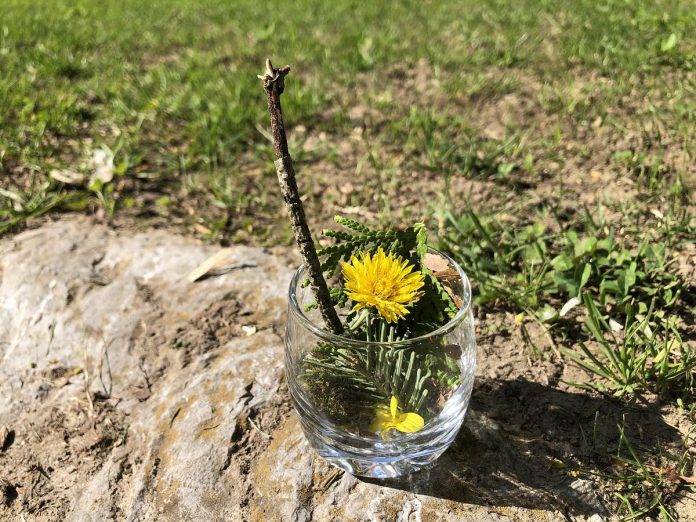
You were born to sense the world deeply around you.
Stop for one moment and step outside. Cup your hands, squeeze your fingers together and slip them behind your ears. Now push your ears forward. Notice how much better you can hear? Can you hear the whoosh of wind as it the strums the boughs of a nearby pine?
Move your head slowly from side to side. Look around you — all the way around. Marvel at the incredible shades of colours, the sheen of light reflecting off that pine, the deep blue of the sky and the folds of white and grey in the clouds overhead.
Rub your fingers along the grooves of your fingertips. Feel the nerve endings — receptors called Meissner’s corpuscles that respond to the slightest pressure such as a gentle caress or the sweep of a cool breeze.
Take one large breath and focus on the smell of the air around you. With every breath in and out (we take 20,000 of these per day), we pick up odours — the latest research suggests we can detect millions of them.
Rub your tongue across the roof of your mouth. Can you feel the texture of your taste buds? Crammed in our mouth and shaped like tiny volcanoes, our more than 10,000 taste buds help us to detect the faintest of flavours. For example, our tongue can help us detect bitterness in as little as one part per 2 million.

Our environment is a delightfully textured tapestry of sound, sight, taste, feel, and smell. But in our modern, technologically saturated world we really only have time to use two of our senses, namely our sense of sight and our sense of hearing. In fact, most of the way we experience the world today is squeezed into two dimensions and confined to a flat and glowing screen.
With all our time spent in front of screens, we tend to forget that nature has graced us with these marvellous sensory abilities — senses that enable us to connect to the world around us in a deep and abiding way, and in a way that technology simply cannot replicate.
Perhaps we intuitively know this, but there is mounting evidence suggesting that time spent in nature enhances our physical and mental health. Just breathing in forest air strengthens our immune system. Simply seeing the colour green releases serotonin, the feel-good hormone. Time spent in nature helps us to focus better, improves our sleep, and boosts our mood and energy levels. In a world where more than half of us live in urban areas, now more than ever, we need nature.
Think about your senses as “nature’s pipeline” — your most direct connection to the natural systems that sustain us all. To soak the world in through all of our senses takes practice, mindfulness, and deliberation. Some people have argued that in today’s modern world, we and our children are suffering from a measure of sensory anaesthesia — a dulling of our senses. Remember this: with time spent in nature with all of our senses awakened, we feel more alive and more in tune with the world around us.
Could it be that we along with our children are feeling a sense of loneliness and alienation because we feel disconnected from the very life systems that nurture and sustain us all? By immersing ourselves and our children again and again in natural spaces, we’ll come to cherish these sanctuaries and reimagine them, not just as places to go but as part of our family, our community.
To really savour nature takes practice. In my new book, The Book of Nature Connection – Sensory Activities for all Ages published by New Society Publishers, I offer up creative and engaging ways to activate your senses so that you can deepen your connection to nature.

Call in birds by becoming a “bird whisperer.” Explore the very small by creating a micro trail. Savour the scents of the forest by making smell cocktails, and find out how to “frame” nature so you can view it in a whole new way.
Find out how you can distinguish between the different smells, shapes, and textures of various conifer needles such as spruce, hemlock, pine, and cedar. Reach under a “feely” blanket and see if you can recognize the various textures and shapes of natural objects hidden underneath.
By coming to nature with all of your senses primed and activated, you’ll come to appreciate nature in a whole new way. You’ll be nourished, inspired, and refreshed — feeling as though you belong to something larger than yourself. In belonging, you’ll feel more complete.
Jacob Rodenburg’s The Book of Nature Connection – 70 Sensory Activities for all Ages was published on April 19, 2022 and is available in print and digital formats from the New Society Publishers website at newsociety.ca.



























